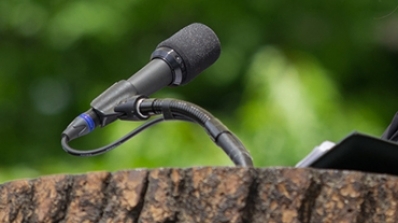This is a class about rhetoric, about image, and more specifically, about the at once clarifying and confounding relationship between rhetoric and image. Rhetoric can build and communicate image, but it can also attack and tear down image. Rhetorical strategies can attempt to repair image, but the calculus of image repair is unpredictable and sometimes counter to conventional wisdom.
Image. In communication, image (or ethos) is a matter of perception. Audiences evaluate a communicator's credibility, and their perception of the communicator's image affects how the audience processes, interprets, and responds. Image scholars—including the foundational work of James McCroskey and his colleagues (e.g., McCroskey & Young, 1981)—point out that image has a number of dimensions, including perceptions of competence and character.
The Importance of Image. An academic study of image rhetoric crosses contexts and issue domains, exploring aspects of civic life and public policy: politics and entertainment, public relations and commerce, scandals and mistakes, miscommunication and missteps, writing and speech. How can politicians repair their images after they have been criticized? How do companies use image attacks against competitors in marketing? How can award winners talk about their successes while preserving reputations of humility?
Issues in these contexts will be the material of image promotion (e.g., a politician bolstering image by referring to specific legislative accomplishments), image attack (e.g., a consumer advocacy group questioning the image of a company on grounds of environmental safety), and image repair (e.g., an entertainer attempting transcendence by extoling fictional dramatizations of challenges as teaching moments for the citizenry). Our discussions of image will also extend to effects of image, which might include actions such as voting, purchase decisions, and even interpersonal/social interactions.
Theory and Methods. Theory will guide our discussions and studies. A good deal of this course will draw on theorizing of sociologists, including Erving Goffman's treatment of facework in social contexts. Other theories, including the work of social psychologist William McGuire (inoculation theory), will be used to supplement and/or complement the rhetorical models explored in the course, including Bill Benoit's image repair typology and Pamela Benoit's image promotion typology. The scholarship we will consult will mostly use rhetorical analysis; often, such scholarship turns to quantitative data (e.g., polling) to measure a rhetor's success. A few image studies use empirical/ quantitative methods of analysis, including experiments.
Image Attacks. Our exploration of image attacks will draw on ancient rhetorical explications of accusations, charges, and criticisms. Issues of offensiveness and culpability will emerge and reemerge as we trace how rhetoric is used to attack (see Ryan, 1982). We will consider how rhetorical attacks function in various contexts, with a special emphasis on politics (e.g., Pfau & Kenski, 1990).
Image Repair. Our focus on image repair will be mostly guided by the work of William Benoit and his typology of image repair strategies (Benoit, 1995a, 2000). Benoit's work attempts to corral the myriad rhetorical options for image repair into a concise, five-category typology of denial, evading responsibility, reducing offensiveness, corrective action, and mortification. This typology has served as the framework for theoretically driven case studies in politics, entertainment, public relations, sports, religion, etc. We will read some of the classic pieces from these genres, as well as some of the newest explorations of image repair.
Image Promotion. Our consideration of image promotion benefits from the work of Pamela Benoit and her typology of image bolstering, or in the words of the book-length treatment of her theorizing, Telling the Success Story. We will consider how athletes, Nobel Prize-winning scientists, and successful Mary Kay salespeople talk about their own successes—walking that fine line between promotion and perceived arrogance.
Summary: A Calculus of Image Rhetoric. The course is neatly segmented into the three areas of image attack, image repair, and image promotion, but the separation is rather artificial. Already, after only a brief overview of where we will be headed in this course, we see the blurred lines that separate attacks, repairs, and promotions. Some strategies of promotion work well to repair an image (e.g., bolstering.) Some image attacks backfire and become the impetus for image repair. And all the while, our conceptualization(s) of image is pulled, stretched, disassembled, reassembled, questioned.
We end the course with a consideration of how image repair and promotion might function when combined with other theoretical approaches. I'll share my ongoing work that explores the combination of image repair with inoculation theory, with an effect that I'm currently naming image prepare.
A study of image can be academic and practical, theoretical and applied. We will continually be asked during the term to consider what our study of theory means to our practice of rhetoric, and how theory-informed rhetorical choices would work in applied settings. You'll be writing and speaking to make discoveries about image during activities designed to improve your writing and speaking and simultaneously to develop your knowledge, theorizing, and analysis of rhetoric.
We won't conclude the course with a tidy definition of image, or of image repair, image attack, and image promotion. Our goal is not to write an equation for image success. We will, however, end the course with a more informed definition of image—and not just a definition we can write or recite, but a definition we can enact through our rhetorical choices, our rhetorical analyses, and our rhetorical theorizing.
By doing this—by engaging in an academic and demanding study of image—we're also doing some image building of our own. We are building, protecting, and promoting rhetoric's image in general and image repair scholarship in particular.
